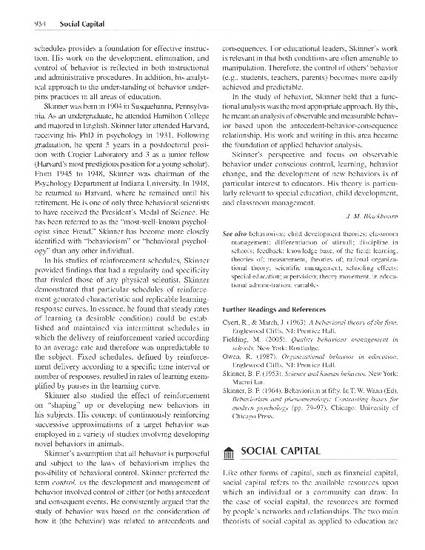
Like other forms of capital, such as financial capital, social capital refers to the available resources upon which an individual or a community can draw. In the case of social capital, the resources are formed by people's networks and relationships. The two main theorists of social capital as applied to education are James Coleman and Robert Putnam. Coleman's work stems from his 1966 report, which indicated that family background accounts for student achievement more than variations in schools do. His subsequent work comparing the greater success of private school students to that of public school students expanded the role of family background to include all the social resources available to a student. The greater success of students in religious private schools was attributable to the overlapping, cross-generational social networks provided by the partnerships among families, church, and school. Coleman defined these partnerships as social capital, which pertained to the norms, the social networks, and the relationships between adults and children that were of value for the child's growing up. Social capital existed within the family but also outside the family, in the community. Within the family, social capital depended upon the strength of parents' relationships with their children. Coleman f~mnd, for example, that even when controlling for parents' socioeconomic status, dropout rates for high school students were lowest when there were two parents, only one sibling to share parental attention, and mothers who expected their children to attend college. Thus, a family's social capital increases children's socioeconomic success, or the children's human capital. Outside of the family, social capital depends upon people's sense of obligation and reciprocity, like quid pro quo, within a community.
Available at: http://works.bepress.com/joanne_marshall/7/

This is a chapter from Marshall, J. M. (2006). Social capital. In F. English (Ed.), Encyclopedia of educational leadership and administration (Vol. 2, pp. 934-936). Thousand Oaks, CA: Sage. For more information, please click here. Posted with permission.